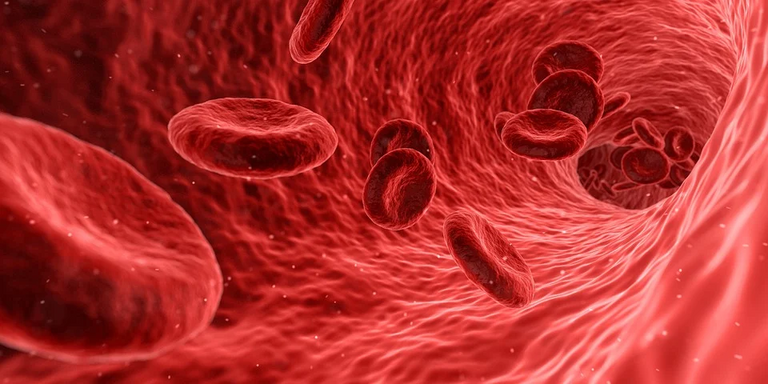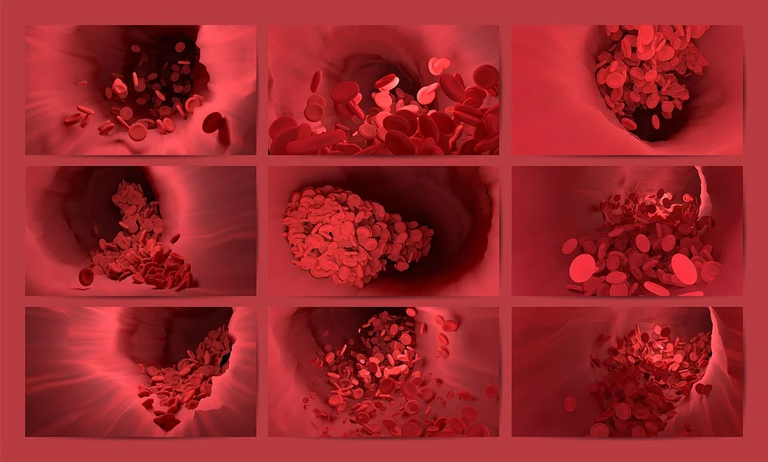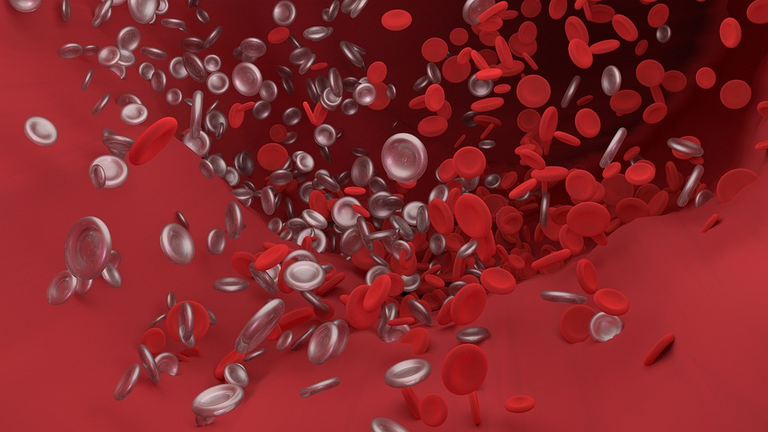La medicina es una carrera que llevo cursando desde hace tres años, no suelo hablar mucho de mi carrera en mi blog, para no caer en la monotonía y aburrirme de ella, no obstante, hay temas que me encantaron y me gustaría compartirles de manera simple sin dejar de lado su complejidad claro está. Con esto no digo que sea un especialista o experto en algún tema que les comparta, sino que cada día aprendo más y la información que les indico es lo que he ido aprendiendo de los libros que amo y de profesores que tienen el mérito de instruirnos de excelente manera. En estos post trataré de maquetearlo en forma de tipo trabajo, es decir, con un indice, introducción, desarrollo y conclusión.
Medicine is a career that I have been studying for three years, I do not usually talk much about my career on my blog, so as not to fall into monotony and get bored of it, however, there are topics that I loved and I would like to share in a simple way without neglecting its complexity, of course. With this I do not say that I am a specialist or expert in any subject that behaves to them, but that every day I learn more and the information that I indicate is what I have been learning from the books I love and from teachers who have the merit of instructing us on excellent way. In these posts I will try to lay it out in the form of a job, that is, with an index, introduction, development and conclusion.
Índice/Index
- Fisiología Hemática.
- Hematopoyesis.
- Hemostasia.
- Tapón Plaquetario.
- Coagulación Sanguínea.
- Hematic Physiology.
- Hematopoiesis.
- Hemostasis.
- Platelet plug.
- Blood Coagulation.
Introducción/Introduction
La sangre es un medio completo, particularmente de sentido común lo conocemos como el líquido rojo que se encuentra en nuestro cuerpo y fluye constantemente, pero este va más allá de eso cumpliendo funciones de transporte, reguladoras y hasta protectoras que funcionan de manera tal que convergen y tienen una clase de sinergia con cada sistema u órganos del cuerpo.
Blood is a complete medium, particularly common sense, we know it as the red liquid that is in our body and constantly flows, but it goes beyond that, fulfilling transport, regulatory and even protective functions that work in such a way that they converge and they have a kind of synergy with every system or organ in the body.
Desarrollo/Development
1. Fisiología Hemática/Hematic Physiology
La importancia de la sangre como indique antes tiene varias funciones como lo son el transporte de oxígeno mediante la hemoglobina, permitiendo llegar el oxígeno desde la sangre a los pulmones, gracias a los eritrocitos. Otras funciones son iguales de esenciales como lo es su especialidad reguladora con el uso del endotelio y capilares que regulan la temperatur con un mecanismo simple, permitiendo la auxilación de los vasos profundo hacia lo superficie cutánea y así aumentando la temperatura, caso contrario si tratará de bajarla por cualquier motivo; complementario a esto la sangre cumple una función protectora, tanto para ella misma como para el cuerpo en general, es el proveedor de moléculas sanguíneas protectoras conocidas como leucocitos y además para mantener la hemostasia frente a un sangrado extremo nos aporta la coagulación sanguínea.
The importance of blood as indicated above has several functions such as the transport of oxygen through hemoglobin, allowing oxygen to reach the blood from the lungs, thanks to erythrocytes. Other functions are just as essential as is its regulatory specialty with the use of the endothelium and capillaries that regulate the temperature with a simple mechanism, allowing the auxilation of the vessels deep to the skin surface and thus increasing the temperature, otherwise if you will try to download it for any reason; Complementary to this, the blood fulfills a protective function, both for itself and for the body in general, it is the provider of protective blood molecules known as leukocytes and, in addition to maintaining hemostasis against extreme bleeding, it provides blood coagulation.
- El Sistema Circulatorio/The circulatory system
Se trata de cada uno de las estructuras que permiten el paso de la sangre, conocido como sistema cardiovascular por la importancia de tanto las arteria, venas y capilares como del corazón. Tambien se cncuentra el sistema linfático promovedor del pasos de células linfoides.
It is each of the structures that allow the passage of blood, known as the cardiovascular system due to the importance of both the artery, veins and capillaries and the heart. The lymphoid cell passage promoting lymphatic system is also found.
- Composición de la Sangre/Blood Composition
Nos encontramos con dos partes o elementos. El primero es el plasma, un líquido de color paja con distinto iones, cuyo el más prominente es el Na (sodio), en el se encuentran distintas proteínas plasmáticas como la albúmina, la globulina y el fibrinógeno que mantenien la homeostasis. Los otros elementos son los denominados elementos formes, siendo estos tres: eritrocitos, leucocitos y trombocitos.
We find two parts or elements. The first is plasma, a straw-colored liquid with different ions, the most prominent of which is Na (sodium), in which are various plasma proteins such as albumin, globulin, and fibrinogen that maintain homeostasis. The other elements are called formal elements, these being three: erythrocytes, leukocytes and thrombocytes.

2. Hematopoyesis/Hematopoiesis
La hematopoyesis, es la forma en la cual se generan cada una de la células sanguíneas. Esto empieza antes de nacer, en el saco vitelino en el embrión, se forman las primeras células, luego viajan a la aorta, poco tiempo después a la placenta para terminar en el hígado (siendo el principal órganos hematopoyético del embrión). Después del nacimiento pasan del hígado a la médula ósea, una vez todo concretado esta se convierte en la principal productora de estas células en el ser humano, pudiendo llegar a reemplazar todo la línea sanguínea si es necesario, como en el caso de un trasplante de médula ósea.
Hematopoiesis is the way in which each of the blood cells is generated. This begins before birth, in the yolk sac in the embryo, the first cells are formed, then travel to the aorta, shortly afterwards to the placenta to finish in the liver (being the embryo's main hematopoietic organs). After birth, they pass from the liver to the bone marrow, once everything is established, it becomes the main producer of these cells in humans, being able to replace the entire blood line if necessary, as in the case of a transplant. bone marrow.
Hay varios términos que hay que entender, no obstante gracias a sus descubridores, le colocaron nombres referente a la célula que producen. En primera instancia la eritropoyesis, se refiere a la formación de eritrocito, es un proceso activo, formándose alrededor de 2.5 millones de eritrocitos, gracias a su destrucción por parte de órganos como el bazo e hígado no hay una sobrepoblación de eritrocitos, su vida es plena, aproximadamente de 120 días antes de morir. El segundo término vendría siendo la leucopoyesis, es decir, la formación de leucocitos o células inmunitarias, estos tienen una vida de 100 a 300 días, si nos referimos a los granulares (linfocitos) mientras que los granulares tienen una vida corta, llegando a solo 12 horas o 3 días. Por último, la tromboyetosis, se refiere a la formación de los megacariocitos (plaquetas), cuya vida es de 8 a 10 días.
There are several terms that must be understood, however thanks to their discoverers, they gave it names referring to the cell they produce. In the first instance, erythropoiesis, refers to the formation of erythrocytes, is an active process, forming around 2.5 million erythrocytes, thanks to its destruction by organs such as the spleen and liver, there is no overpopulation of erythrocytes, its life is full, approximately 120 days before death. The second term would come to be leukopoiesis, that is, the formation of leukocytes or immune cells, these have a life of 100 to 300 days, if we refer to the granules (lymphocytes) while the granules have a short life, reaching only 12 hours or 3 days. Finally, thromboyetosis refers to the formation of megakaryocytes (platelets), whose life is 8 to 10 days.
La producción de eritrocitos es estimulada por la hormona eritropoyetina secretada por los riñones y los leucocitos por sustancias químicas conocidas como citocinas. Mientras que los megacariocitos (plaquetas) son estimuladas por una citosina especializada llamada trombopoyetina.
Erythrocyte production is stimulated by the hormone erythropoietin secreted by the kidneys and leukocytes by chemicals known as cytokines. While megakaryocytes (platelets) are stimulated by a specialized cytosine called thrombopoietin.
Todo esto que acabe de mencionar se forma con la médula ósea, no obstante de forma peculiar gracias a tejidos producidos por la médula ósea, nos podemos enriquecer de una buena serie de células sanguíneas. La médula ósea mieloide, formadora de eritrocitos, y la médula ósea linfoide, formadora de linfocitos.
All this that I just mentioned is formed with the bone marrow, although in a peculiar way thanks to tissues produced by the bone marrow, we can enrich ourselves with a good series of blood cells. The myeloid bone marrow, which forms erythrocytes, and the lymphoid bone marrow, which forms lymphocytes.

3. Hemostasia/Hemostasis
Cuando hablamos de esta palabra, nos referimos al control o los distintos mecanismos que se usan para controlar una hemorragia. Consiste de manera concreta en el uso de una proteína llamada fibrina, permitiendo así la adherencia de las plaquetas para forma un coágulo sanguíneo. El proceso se encamina con tres pasos:
When we speak of this word, we refer to the control or the different mechanisms that are used to control bleeding. It consists in a concrete way in the use of a protein called ** fibrin **, thus allowing the adhesion of platelets to form a blood clot. The process proceeds with three steps:
1- Constricción Vascular.
2- Formación del Tapón Plaquetario.
3- Coagulación Sanguínea.
1- Vascular constriction.
2- Formation of the Platelet Plug.
3- Blood Coagulation.
- Endotelio/Endothelium
No podemos dejar de hablar de la estructura que se encuentra sobre el colágeno, es un epitelio escamoso simple que separa al colágeno de la sangre, secreta un tipo de protaglandina conocido como prostaciclina y óxido nítrico, la importancia de esto entra en juego con la vasodilatación que promueven.
We can not stop talking about the structure that is on collagen, it is a simple squamous epithelium that separates collagen from the blood, it secretes a type of protaglandin known as prostacyclin and nitric oxide, the importance of this comes into play with vasodilation that they promote.
Otro aporte importante es la membrana plasmática endotelial. Contiene una enzima llamada CD39 que transforma el adenosín difosfato (ADP) en adenosin monofosfato cíclico (AMPc), sin esto las plaquetas se pegarían entre sí, impidiendo el flujo sanguíneo normal.
Another important contribution is the endothelial plasma membrane. It contains an enzyme called CD39 that transforms adenosine diphosphate (ADP) into cyclic adenosine monophosphate (cAMP), without this the platelets would stick to each other, preventing normal blood flow.
- Factor de Von Willebrand/Von Willebrand factor
Es una importante proteína con la función de promover la adherencia de las plaquetas, sin que el flujo sanguíneo las despegue y ocurra una hemorragia. Es importante resaltar que el deficit de esta proteína (por cualquier motivo), implica que una persona tienda a sufrir hemorragias continuas y con ello atraer otros problemas como una anemia.
It is an important protein with the function of promoting the adherence of platelets, without the blood flow taking them off and bleeding occurring. It is important to highlight that the deficit of this protein (for whatever reason), implies that a person tends to suffer continuous bleeding and thereby attract other problems such as anemia.
- Fibrina, ADP, Tromboxano y Prostaglandina/Fibrin, ADP, Thromboxane and Prostaglandin
Estas cuatros son proteínas (fibirna), nucleótidos (ADP), eicosanoides (tromboxano) y derivado de ácido grasos (prostaglandinas), son estructuras que promueven la hemostasia e intervienen en algún paso de ella. La fibrina proviene del fibrinógeno (siendo este la forma inactiva), una vez ocurre la ruptura de un vaso esta actúa y pasa a su forma activa, es decir, fibrina y promueve la coagulación mediante la condensación del plasma. El ADP y tromboxano funcionan atrayendo más plaquetas al lugar de la herida, una vez son secretadas. Las últimas serían las prostaglandinas que secretan, como mencionó la tromboxano además de ser un eicosanoides, también es una prostaglandina por esta provenir de los ácidos grasos, ayuda a la coagulación, caso contrario de otra que les hable con anterioridad, la prostaciclina que la inhiben, estas dos son estimuladas por la ciclooxigenasa que produce el endotelio.
These four are proteins (fibrin), nucleotides (ADP), eicosanoids (thromboxane) and derived from fatty acids (prostaglandins), they are structures that promote hemostasis and intervene in some step of it. Fibrin comes from fibrinogen (this being the inactive form), once the rupture of a vessel occurs, it acts and goes to its active form, that is, fibrin and promotes coagulation by condensing the plasma. ADP and thromboxane work by attracting more platelets to the wound site once they are secreted. The last would be the prostaglandins that secrete, as thromboxane mentioned, in addition to being an eicosanoid, it is also a prostaglandin because it comes from fatty acids, it helps coagulation, contrary to another that I told you about before, the prostacyclin that inhibit it These two are stimulated by the cyclooxygenase produced by the endothelium.

4. Tapón Plaquetario/Platelet Plug
Dentro de la hemostasia, se encuentra este paso para el cese de un sangrado, pero su complejidad requiere una explicación por separado. Como dice su nombre, es un una clase de tapón, está constituido por los megacariocitos (plaquetas), llegando de forma que cierran la herida momentáneamente, pasando de ser células lisas a ser más esféricas y espinosas para poder "tapar" la herida o daño. Aunque no tienen núcleo presenta distintas estructuras que la hacen considerarse como una células, como las glucoproteínas y glucosaminoglucano, permitiendo secretar ADP para la formación de prostaglandinas, como la tromboxano 2 importantes para su funcionamiento como mencioné.
Within hemostasis, this step to cessation of bleeding is found, but its complexity requires a separate explanation. As its name says, it is a kind of plug, it is made up of megakaryocytes (platelets), reaching in a way that closes the wound momentarily, going from being smooth cells to being more spherical and thorny in order to "cover" the wound or damage . Although they do not have a nucleus, they present different structures that make them be considered as cells, such as glycoproteins and glycosaminoglycan, allowing the secretion of ADP for the formation of prostaglandins, such as thromboxane 2, which are important for its operation, as I mentioned.
El tapón plaquetario, se forma una vez ocurra una ruptura en el endotelio vascular, mediantes distintos medios de alerta como el SNP para preservar la homeostasis, se informa a las plaquetas de lo ocurrido y estas llegan al lugar de la herida, provenientes del plasma, paso siguiente comienzan a pegarse, gracias al factor de Von willebrand terminando así la ruptura, hasta el siguiente paso que es la coagulación.
Within hemostasis, this step to cessation of bleeding is found, but its complexity requires a separate explanation. As its name says, it is a kind of plug, it is made up of megakaryocytes (platelets), reaching in a way that closes the wound momentarily, going from being smooth cells to being more spherical and thorny in order to "cover" the wound or damage . Although they do not have a nucleus, they present different structures that make them be considered as cells, such as glycoproteins and glycosaminoglycan, allowing the secretion of ADP for the formation of prostaglandins, such as thromboxane 2, which are important for its operation, as I mentioned.
El tapón plaquetario es un proceso rápido y fácil de entender su funcionamiento, pero como indique arriba hay distintas "cosas" que tanto ayudan como avisan a las plaquetas sobre la herida y la medida que se debe tomar.
The platelet plug is a quick and easy process to understand how it works, but as indicated above there are different "things" that both help and warn platelets about the wound and the action to be taken.

5. Coagulación Sanguínea/Blood Coagulation
Es el último paso de la homeostasis y de igual forma el último punto que tocaré en este post. De manera concisa la coagulación es un medio de transformación, es decir, transforma el plasma en un líquido más condensado y menos líquido para reforzar el tapón plaquetario, para ello recurre a factores de procoagulación, cada uno con diferentes funciones y la mayoría se encuentran de forma inactiva en el plasma, una vez ocurra una herida y termine el tapón plaquetario llegan a terminar todo.
It is the last step of homeostasis and in the same way the last point that I will touch on in this post. Concisely, coagulation is a means of transformation, that is, it transforms plasma into a more condensed and less liquid liquid to reinforce the platelet plug. To do this, it uses procoagulation factors, each with different functions and most of them are found inactive form in the plasma, once a wound occurs and the platelet plug ends, they finish everything.
Hay una inmensidad de factores de procoagulación, cada uno inmerso en el plasma. Los importante son la vitamina K produciendo distintos factores y protrombina y el Calcio o factor IV (porque produce el factor IV). Con estos factores existe una división en la vías, siendo estas la vía extrínseca o rápida y la vía intrínseca o lenta, las dos empiezan con distintos factores pero finalizan con el factor X de la coagulación.
There is an immensity of procoagulation factors, each immersed in the plasma. The important ones are vitamin K producing different factors and prothrombin and Calcium or factor IV (because it produces factor IV). With these factors there is a division in the pathways, these being the extrinsic or fast pathway and the intrinsic or slow pathway, both begin with different factors but end with coagulation factor X.
De manera contraria existe proteínas que inhiben la coagulación como la proteína C o factor de V Leiden, este inhibe el factor V y VII respectivamente. También encontramos la proteína S, está solo aumenta la producción de proteína C.
On the contrary, there are proteins that inhibit coagulation such as protein C or V Leiden factor, this inhibits factor V and VII respectively. We also find protein S, it is only increases the production of protein C.
- Plasmina/Plasmin
Como existe una proteína que produce la coagulación, es decir, la fibrina, existe también una que la destruye, como por así decirlo, está es la plasmina. Una vez todo esté normal, se pasa a lo que se denomina como disolución del coágulo o fibrinolisi, es decir, la destrucción de la fibrina con el paso del plasminógeno a plasmina para su destrucción y degradación en el plasma.
As there is a protein that produces coagulation, that is, fibrin, there is also one that destroys it, as it is, as it were, is plasmin. Once everything is normal, it is passed to what is called as clot dissolution or fibrinolisi, that is, the destruction of fibrin with the passage of plasminogen to plasmin for its destruction and degradation in plasma.

Conclusión/Conclusion
Para finalizar diré que el sistema hemático, es uno de los sistemas con más funciones en el organismo y que interviene en más órganos como ningún otro sistema. Se encarga desde ayudarnos a respirar hasta el cese de heridas una vez obtengamos una simple herida como la cortada por un cuchillo de cocina.
To finish I will say that the hematic system is one of the systems with the most functions in the organism and that intervenes in more organs like no other system. It is in charge from helping us breathe to the cessation of wounds once we obtain a simple wound like the one cut by a kitchen knife.
Los procesos son variados y las células de igual manera, de forma complementaria hay fármacos que afectan a la coagulación como el ácido acetilsalicílico o conocida como aspirina o heparina, de forma tal que si sufres de problemas de coagulación no es recomendable tomar estos fármacos.
The processes are varied and the cells in the same way, in a complementary way there are drugs that affect coagulation such as acetylsalicylic acid or known as aspirin or heparin, in such a way that if you suffer from coagulation problems it is not recommended to take these drugs.
Por último hablar de este sistema es fenomenal, su perseverancia y complejidad es alta, pero una vez entiendes cada nombre y funcionamiento que hace desde las células se vuelve un poco más simple, claro no obstante nunca se sabrá lo suficiente porque como hay un linfocito T dentro de este hay más tipos de linfocitos T propiamente dichos y cada día se descubren nuevas moléculas, por lo tanto dejar de estudiar no es lo recomendable tanto en medicina como en cualquier carrera.
Lastly, talking about this system is phenomenal, its perseverance and complexity is high, but once you understand each name and how it works from the cells, it becomes a bit simpler, however, you will never know enough because as there is a T lymphocyte Within this there are more types of T lymphocytes themselves and new molecules are discovered every day, therefore, stopping studying is not recommended in both medicine and any career.

Bibliografía
Grossman Sheila, Porth Matson Carol. (2014). Fisiopatología Porth 9na Edición. España: Lippincott Williams & Wilkins.
Javier, M. J. (2013). Fisiología Humana Decimotercera edición. México: Stuart Ira Fox.
Fuente de imágenes de pixabay 1, 2, 3, 4, 5, 5/
Images source on pixabay 1, 2, 3, 4, 5, 5
De resto son hechas con la herramienta canva o son de mi autoría./
The rest are made with the canva tool or are my own.
Espero les haya gustado mi contenido.
| Elian Astudillo | |
|---|---|
| @eliaricardo200 | |
| Twiter | @eliaricardo200 |

Herramientas utilizadas para la elaboración del GIF
| Canva | https://www.canva.com/ |
|---|---|
| GIPHY | https://giphy.com/gifs/8mqyAZJ5tg0pMMV8Ii |
| Pixabay | https://pixabay.com/es/ |